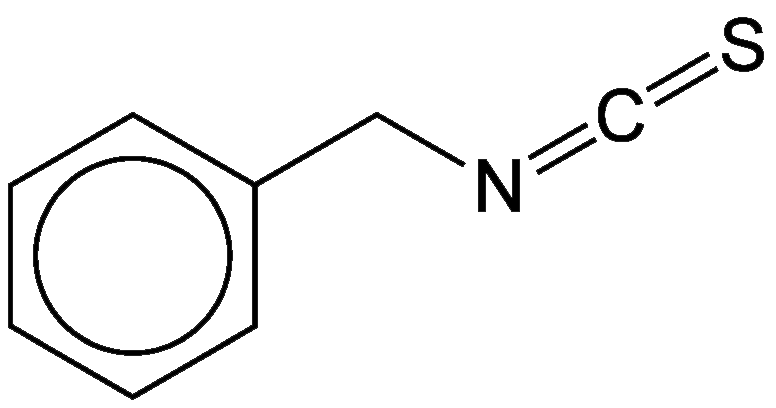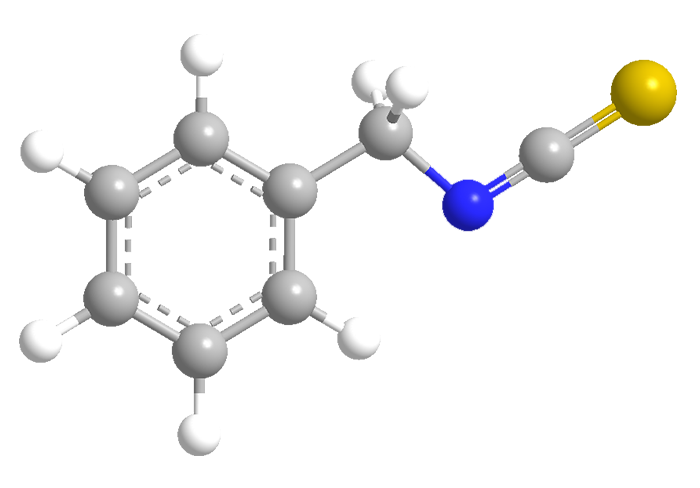What molecule am I?


Benzyl isothiocyanate is a natural product found in the Eastern Hemisphere mustard plant Alliaria petiolata, seeds of the pilu tree (Salvadora persica), and papaya (Carica papaya) seeds. It is a colorless to pale yellow liquid with a boiling point of 242–243 ºC and a characteristic watercress-like odor.
In 2006, there was a report that isothiocyanates, including benzyl isothiocyanate, protected against pancreatic carcinogenesis in vitro. Based on this study and others, Bo Yu and colleagues at the Chinese Academy of Sciences (including its university) sought to find biosynthetic methods for producing isothiocyanates.
As reported in ACS Synthetic Biology, the researchers metabolically engineered Escherichia coli to synthesize benzyl isothiocyanate. By using a combination of gene mining, pathway engineering, and protein modification, they were able to adapt two enzymes that allowed E. coli to make the product.
The authors state that they “provided a proof of concept for the production of benzyl isothiocyanate by microbially produced enzymes and, importantly, laid the groundwork for further metabolic engineering of microbial cells for the production of isothiocyanates.”

Learn more about this molecule from CAS, the most authoritative and comprehensive source for chemical information.
Molecule of the Week needs your suggestions!
If your favorite molecule is not in our archive, please send us a message. The molecule can be notable for its current or historical importance or for any quirky reason. Thank you!
Stay Ahead of the Chemistry Curve
Learn how ACS can help you stay ahead in the world of chemistry.

